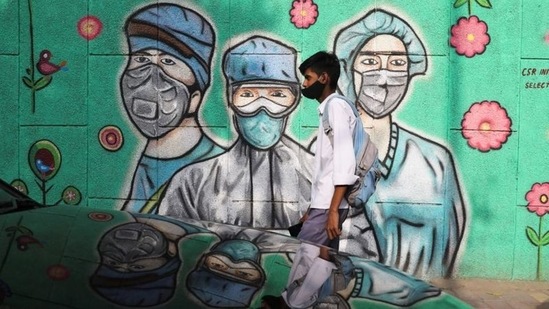Covid-19: What you need to know today
As India considers opening up as the second wave abates (Delhi, for instance, has seen a sharp fall in positivity rates to the low single digits, and could start opening up as early as next week), it would do well to focus on what may well have been a silent contributor to the surge in cases – ventilation.
There’s a myna inside my room in the office as I write this. It’s hot outside, but I will shortly shoo it away. It came in through a window installed a few days ago. To be exact, there was always a window. Only, it was one of those sheet glass ones affixed to the frame, and which could not be opened. Now, I have a tall sliding window that I always leave open. As regular readers of this column know, I contracted Covid in April. I suspect that despite all the precautions I took, the air in my room did me in (I could be wrong, but I have pretty much ruled out all other options). Hence the window. And hence the myna (which has been shooed away). There has been a lot of emphasis on variants and the role of superspreading events in the emergence of the second wave of the coronavirus disease pandemic in India. What hasn’t got much attention is ventilation, as I was reminded by my old friend and adman (no, he isn’t like Don Draper at all) Shashi Sinha. Not long after we spoke, the office of India’s Principal Scientific Adviser released an advisory titled “Stop the Transmission, Crush the Pandemic”, which featured an entire section on ventilation – at home, and at work. As India considers opening up as the second wave abates (Delhi, for instance, has seen a sharp fall in positivity rates to the low single digits, and could start opening up as early as next week), it would do well to focus on what may well have been a silent contributor to the surge in cases – ventilation.

It’s important, when speaking of ventilation, to mention Linsey Marr, the aerosol and infectious diseases specialist at Virgina Tech, and among the first to claim that the Sars-CoV-2 virus that causes the coronavirus disease was transmissible by air. That was as early as April 2020, but no one listened to her and other scientists who were merely pointing out that virus-laden aerosol particles would pretty much behave like other aerosol particles of the same size – which means they can travel (farther than the six feet, for instance, that was initially considered the safe distance in the case of Covid-19), stay suspended for extended lengths of time, and, most importantly, be breathed in. It isn’t clear why WHO and national health bodies chose not to listen to scientists such as Marr. Or Richard Corsi, from Maseeh College at Portland University, and an expert in indoor air quality. Again, as long ago as April 2020, Corsi was speaking about how to make indoor spaces safe – using existing technologies. No one listened.
It isn’t difficult to see how poor ventilation could have contributed to India’s second wave. By early February, cases in India had fallen to below 10,000 a day, and with the vaccine drive launched in January, most people believed India had won the war against the virus (it still might have, had it got its vaccine strategy right, but enough has been said on that). Consequently, everything opened up: restaurants (for indoor dining); bars; malls; offices (even multiplexes were functioning in most states; that’s right, closed, air-conditioned spaces, where they show movies). The use of public transport (closed buses, metros) increased. Virtual office meetings gave way to real ones – conference rooms filled up with many of the attendees wearing their masks on their chins or around their necks. Indoor airborne transmission of the virus may have well be responsible for most cases seen in February and March (and, along with so-called variants of concern and superspreader events, contributed to the second wave).
As India opens up after the second wave, and looks forward to at least six months of non-pharmaceutical interventions and restrictions (most of the population is still unvaccinated), all of us would do well to pay attention to the work of scientists such as Marr and Corsi (or others, for there are many) to understand how to make indoor spaces safe. The primary focus should not be retail stores or restaurants or even offices. It should be schools.






